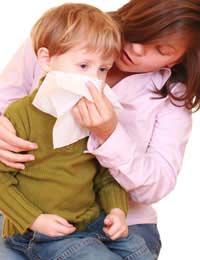Allergies to Dust

Coping With A Dust Allergy
You often hear people say that they’re allergic to dust. But did you know that it’s not the dust they’re allergic to? Allergies are caused by the tiny dust mite – so small it’s invisible to the naked eye. They live in every house but are particularly fond of setting up home in soft furnishings, carpets, curtains and even cuddly toys. But their favourite place of all is the humble bed. Because most of us spend about a third of every day in bed, we’ll inhale plenty of dust mite allergens, and if you’re allergic to them, that’s bad news.So What Is A Dust Mite Allergy?
If you’re allergic to dust mites, you’ll experience a hypersensitive reaction to proteins in the dust mite droppings. The protein attacks the respiratory system causing wheezing, sneezing, hay fever and asthma.What Are The Symptoms Of Dust Mite Allergy?
Dust mite allergies often look like hay fever, with the poor victim experiencing a runny nose, itching eyes, and fits of sneezing. Sometimes a dust mite allergy can trigger an asthma attack.How Can I Be Sure That I’m Allergic To Dust Mites?
To be certain of the cause of any allergy, it’s necessary to visit the doctor. Explain your symptoms and let the doctor know when, where and how often you experience them. Your doctor might want to confirm your suspicions of a dust mite allergy with pin prick tests or other blood tests.Why Are People Allergic To dust Mites?
Dust mite droppings contain proteins. When these are inhaled or when they come into contact with the skin, the body produces antibodies to defend against a perceived attack. These antibodies trigger the release of histamines, and it’s these that cause the swelling and irritation to the respiratory system.Avoiding The Symptoms Of Dust Mite Allergy.
If you find that you constantly have a runny nose, a blocked nose, or watery eyes, try adapting your home and see if the symptoms disappear.Here are some tips:
- Wash bedding often in very hot water.
- Go for the minimal look and cut back on furniture and, in particular, soft furnishings.
- Always dust woodwork and floors with wet cloths.
- Get rid of carpets and have polished wooden floors.
- Ditch the curtains for wooden or metal blinds.
- Invest in a vacuum cleaner with an allergen filter and use it at least every other day.
Treating Dust Mite Allergy
Although symptoms can be controlled by treatment, there are no tablets to take to rid yourself of the allergy.Antihistamines, given as tablets or in a syrup, can lessen the allergic reaction by preventing histamines from causing the cascade of symptoms. Antihistamines can make you drowsy though.
To reduce nasal inflammation and control a runny or blocked nose, your doctor might prescribe a nasal spray or drops. These contain. sodium cromoglicate, corticosteroids or antihistamines.
To help with red, itchy or sore eyes, your doctor could give you eye drops containing sodium cromoglicate, nedocromil, or antihistamines.
If your dust mite allergy is severe, your doctor may try hyposensitisation - a kind of 'vaccination' against the allergen. You’ll have to have regular injections of the allergen over several weeks, possibly months, increasing the amount of allergen you’re exposed to over time. But this type of treatment is not routinely given.
If your dust mite allergy triggers asthma attacks, there are two types of asthma medication available. There are relievers that act quickly to relax the muscles of the airways, making breathing easier when an attack occurs.
Your doctor might also recommend a preventer. These act over a longer period of time. They reduce inflammation in the respiratory system and act, as their name suggests, to prevent an attack happening. If you use your preventer properly, you might never need to use your reliever.
Keep Busy About The House
Next time you think you might be suffering from a dust allergy, remember that it’s the dropping of those tiny little creatures that you’re allergic to. The thought alone should have you rushing for the vacuum cleaner.As troublesome as it is, many if not all of the symptoms of dust mite allergy can be reduced and relieved by tackling dust mite havens such us your bed, your carpet and your couch.


Re: What You Should Know About Poisonous Plant Allergies
Just to help others ,my partner had occasional breathing problems and swollen glands in her neck…
Re: Coping With Eczema
@Char. There's lots of help and medications for eczema nowadays, you need to go and see your doctor to establish which treatment would work…
Re: Coping With Eczema
I'm 14 years old and I have a condition called eczema it's itchy dry and Uncomftable too cope with please could you give me advice thanks.
Re: Allergic Conjunctivitis
@mans. This is not unheard of and there are lots of possibilities including an allergy to something that you/the medical staff have not…
Re: Allergic Conjunctivitis
My grandson is 13yrs old and has in the last three months had a couple of anaphylactic episodes that required us to take him to the er to…
Re: Allergic Reactions in Babies
My son had a allergic reaction to Nurofen Ibruperfen, he is severely ill almost fatal. I would like other people to be aware of…
Re: Allergies to Dogs and How to Prevent Them
Is a tekel miniature a dog that people are frequently allergic to
Re: Allergic Reactions in Babies
Just started weaning my 6 month old and she is reacting to a number of foods. Reactions are usually red blotches around her mouth…
Re: Pets for Allergic Children
My daughter has been positively tested for allergies to both cats and dogs. She had 2 severe asthma attacks after we bought a kitten.…
Re: Hayfever in Children
Don't know whether it's climate change but I keep hearing about more and more plants that affect hayfever - making the sneezy season longer…